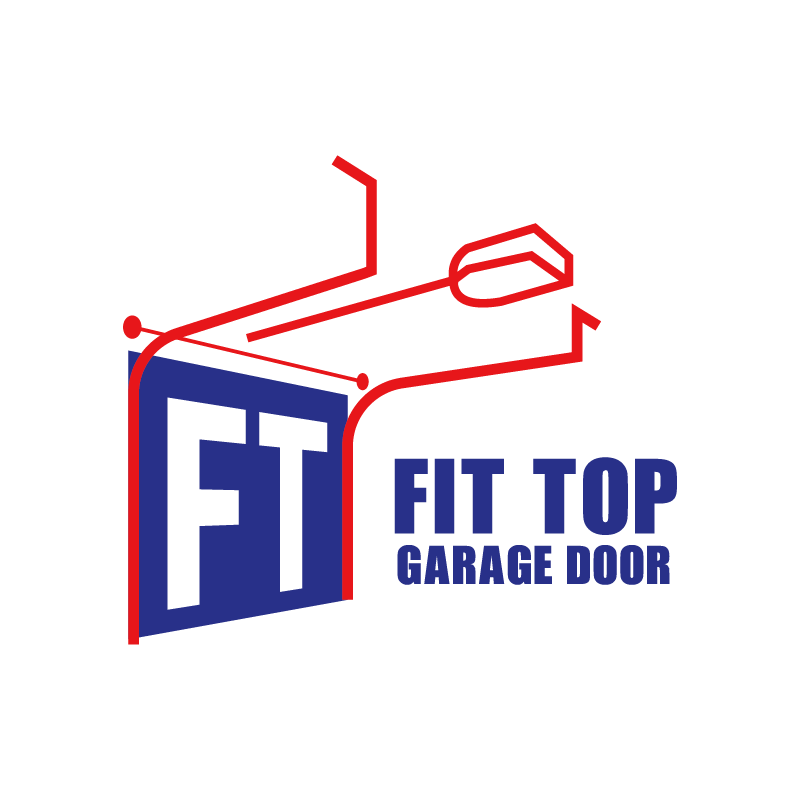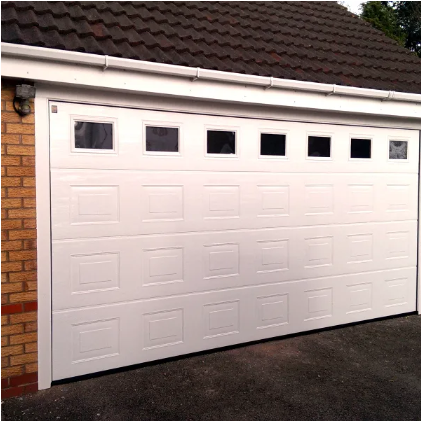Essential Monthly Maintenance Tasks for Automatic Garage Doors
Visual Inspection of Door Components
Looking at the parts of an automatic garage door regularly makes sure everything keeps working properly. Once a month I check the tracks, rollers, and those little pulley things for any wear and tear, rust spots, or when they start getting out of line which can really mess with how the door moves. Don't forget about the nuts and bolts either since constant movement tends to shake them loose over time. Writing down what gets checked and when turns out to be super helpful stuff. A simple notebook entry after each inspection lets me spot problems before they become big headaches later on. Most folks probably don't know this, but the Garage Door Manufacturers Association actually suggests keeping records like this too. Not only does it help extend the life of the door, but having documentation also means homeowners aren't caught off guard when something breaks down unexpectedly.
Cleaning and Aligning Safety Sensors
Safety sensors play a vital role in accident prevention and keeping garage doors operating properly. Dust and debris buildup on these sensors often causes problems, so regular cleaning with a soft cloth is recommended to keep things running smoothly. Getting the alignment right matters a lot too since both sensors need to line up facing each other at just the right height for everything to work as intended. When sensors aren't properly aligned, there's real danger involved because doors might fail to close completely. Anyone needing adjustments should carefully move the sensors into position or secure their mounting brackets if necessary. Keeping those sensors aligned not only makes the whole system safer but also helps automatic garage doors function better day after day without creating unnecessary risks down the road.
Checking Door Balance and Alignment
Getting the balance right on an automatic garage door matters a lot if we want it to work smoothly and last longer. When checking balance, first disconnect the opener at the switch and try lifting the door up about halfway by hand. Doors that drop back down need fixing pretty soon before things get worse. Looking at how the door sits in its tracks reveals a lot too. Any gaps between the door panels or places where it binds against the track mean something needs adjusting. Some folks might find this stuff beyond their skill level, so calling in a pro makes sense when adjustments aren't done properly they just wear out parts faster and create real safety risks. Keep an eye on these elements over time and most garage doors will continue functioning reliably for years without major problems.
Proper Lubrication Techniques for Smooth Operation
Lubricating Rollers, Hinges, and Springs
For an automatic garage door that runs smoothly and quietly, lubricating those rollers, hinges, and springs makes all the difference. A good silicone spray or lithium grease works wonders here. When we talk about proper lubrication, what we're really doing is cutting down on friction. That means longer life for those parts and better overall performance from the door itself. Don't forget those tricky spots where the door connects to the opener mechanism either. Getting some lubricant on those areas stops rust from forming and keeps everything working properly. Moisture protection matters because metal parts just don't last long when they start corroding. Most folks find that giving their door a good lubrication session once per season does the trick, especially after big storms or temperature swings. Some people keep track in a notebook or phone calendar so they remember when they last did this important maintenance task.
Maintaining Track Alignment and Cleanliness
Keeping those tracks aligned and clean ranks right up there with other important parts of garage door upkeep. First thing to do? Take a good look at the tracks themselves. Check for any dirt, grime, or stuff that might have built up over time. Straight, clean tracks mean safer operation all around. Grab some soapy water mixed with a bit of dish soap works great and wipe down those tracks until nothing is blocking where the wheels roll along. A little cleaning goes a long way toward protecting the wheels from extra wear and taking pressure off the opener mechanism. When things seem out of whack, just loosen those bracket screws holding the tracks in place. Get everything looking straight up and running parallel before tightening everything back down again. Don't forget to check on this stuff regularly though. Neglecting track maintenance leads to all sorts of headaches later on, plus it cuts short how long that expensive garage door will last.
Testing and Maintaining Safety Mechanisms
Verifying Mechanical Reverse Functionality
Testing how well the garage door reverses when something gets in its way isn't just good practice it's actually pretty important for keeping everyone safe around the house including our furry friends. Most people run a quick check once a month, usually putting something like a stack of paper towels where the door would normally close. When working properly, the door will stop and go back up as soon as it senses anything blocking its path. If it doesn't do that, then someone needs to look into fixing whatever might be wrong with those safety sensors. Regular checks help confirm both the electronics and moving parts are doing their job right. And let's face it nobody wants to deal with broken equipment or worse yet someone getting hurt because a simple test wasn't done.
Ensuring Proper Photo Eye Operation
Keeping those photo eye sensors working right on garage doors matters a lot for safety reasons. Every few weeks I check them out, tweak their position if needed, and run some quick tests to see if they're still doing their job properly. When these little guys stop detecting things in front of the door, bad stuff can happen real fast. Just grab a damp cloth once in a while and wipe away all that dust and spider webs that collect there over time. And don't wait too long to swap out any damaged or broken sensors either. They're basically the first line of defense against serious injuries and also help keep unwanted visitors out of the house at night.
Seasonal Adjustments and Professional Servicing
Weatherproofing for Extreme Temperatures
Keeping an automatic garage door properly weatherproofed makes all the difference when it comes to how long it lasts and whether it keeps working right through hot summers and freezing winters. First things first, check those weather seals around the edges and look at the insulation material inside the door frame. Damaged seals let in drafts and water, so swapping them out fixes two problems at once. For steel garage doors specifically, adding some kind of insulation kit really pays off because these metal doors conduct temperature extremes much worse than other materials. Without proper insulation, steel doors can warp or develop rust spots over time. A good rule of thumb is to do a quick inspection before each season change, maybe in late spring and early fall. This helps catch issues before they become big headaches when winter rolls around or summer heat hits full force.
Scheduling Annual Professional Inspections
Getting regular checks from professionals is really important for keeping garage doors working properly over time. Scheduling an inspection once a year with someone who knows what they're doing makes sure everything runs smoothly and catches small issues before they become big headaches. Taking this kind of preventative action actually adds years to how long the door will last while saving money on expensive fixes down the road when things break because nobody paid attention. Techs usually give good advice too based on exactly what type of door someone has installed at their home or business. Their experience matters a lot when it comes to maintaining proper operation and making sure the door continues to work well for many years ahead.
Leveraging Smart Technology for Predictive Maintenance
IoT Sensors and Remote Monitoring
Adding IoT sensors to an automatic garage door system really boosts predictive maintenance possibilities. The sensors track how often the door opens and closes, monitor signs of wear, and flag when something might need fixing all through a handy smartphone application. Homeowners get notifications about possible problems long before they turn into major headaches, which means getting repairs done while they're still small issues. Safety gets better this way too since nobody has to wait until something breaks completely. Plus there's less need to do those tedious hands-on inspections every month or so. Remote monitoring lets people keep tabs on their garage doors from anywhere, making sure everything runs smoothly without having to constantly climb down into the garage to check things out manually. For anyone looking at extending the life of their garage door equipment, these smart sensors offer real value over time.
AI-Driven Diagnostics for Proactive Care
When AI tools get integrated into garage door systems, it really changes the game for maintenance work. Instead of waiting until something breaks down, these smart systems actually tell us when service might be needed based on all sorts of data points collected over time. The AI looks at things like wear patterns on parts, unusual noises during operation, and even temperature fluctuations inside the mechanism. This kind of diagnostic check catches problems early on, like when the motor starts working harder than normal or if any safety sensors aren't functioning properly anymore. Homeowners who adopt this tech tend to experience fewer unexpected breakdowns and generally get way more years out of their automatic garage doors. For anyone serious about keeping their home secure without constant headaches, investing in AI-based maintenance solutions makes a lot of sense in the long run.
FAQs
Why is it important to conduct a visual inspection of garage door components each month?
Monthly visual inspections allow you to detect wear, rust, and misalignment that could obstruct the door's operation, helping to prevent larger issues and prolong the door's lifespan.
How can cleaning and aligning safety sensors enhance garage door functionality?
Clean and correctly aligned sensors prevent accidents by ensuring safe door operations. Misalignment can lead to the door failing to close, posing safety hazards.
What steps should be taken if the garage door fails to reverse when an object obstructs its path?
If the garage door fails to reverse upon obstruction, it suggests malfunctioning safety mechanisms that need immediate maintenance to ensure family safety.
How does using IoT sensors enhance garage door maintenance?
IoT sensors offer real-time data on door usage and maintenance needs, alerting homeowners to potential issues, which fosters timely repairs without extensive manual checks.
Table of Contents
- Essential Monthly Maintenance Tasks for Automatic Garage Doors
- Testing and Maintaining Safety Mechanisms
- Seasonal Adjustments and Professional Servicing
- Leveraging Smart Technology for Predictive Maintenance
-
FAQs
- Why is it important to conduct a visual inspection of garage door components each month?
- How can cleaning and aligning safety sensors enhance garage door functionality?
- What steps should be taken if the garage door fails to reverse when an object obstructs its path?
- How does using IoT sensors enhance garage door maintenance?

